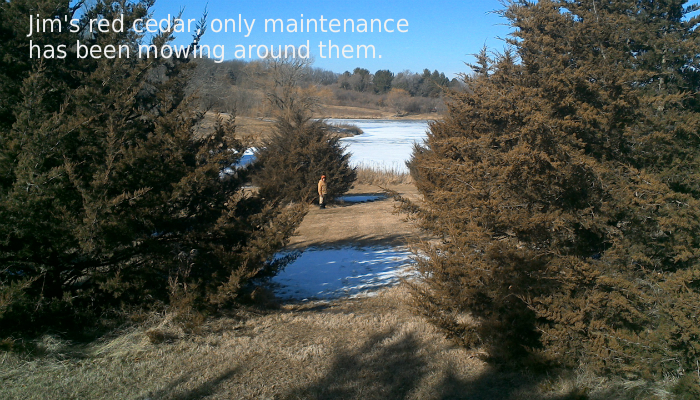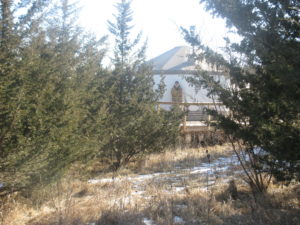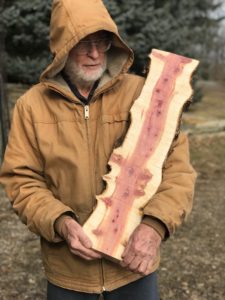Red Cedar: Our Only Local Native Conifer, and the Birds Love It

Our native red cedar has two noticeably different varieties. In the eastern states, with more rainfall and less drying winds, red cedar is spire shaped and can get 100 feet tall. But coming westward of the Appalachians, it rather abruptly transitions to a much shorter and densely branched version, which seldom grows more than forty feet tall, often becoming a big rounded bush if growing in full sun with no competition. And here in Johnson County it is our only native conifer.
And this is one tough little tree. About 15 years ago, neighbor Jim balled and burlapped 40 little ones from an abandoned pasture in October, and planted them on a sunny north-facing, very windswept hillside, giving them no water, no mulch, and no deer protection. Today there are 38 thriving.
Depending upon their exposure, in winter individual red cedars might become tinged with a purplish or brownish cast, which is only a problem if you suppose that conifers are supposed to stay green all winter. If you transplant from the wild, look carefully at ground level first. If older ones have been cut down, the stumps can resprout, sometimes producing a tempting little tree with an enormous root system.

Clusters of little blue cedar berries. Technically these are “berry-like cones,” but the birds don’t care.
In autumn the females offer a crop of little hard, blue, durable berries, which birds love. In fact, they love the whole tree. Degraaf and Witman’s Trees, Shrubs and Vines for Attracting Birds lists 29 bird species that eat the berries, 21 that use the tree for cover, and 8 that use it for nesting. The birds reciprocate by spreading the seed widely, and seedlings appear in uncut hayfields, CRP planting no longer burned, fencerows, and road ditches.
In new hardwood plantings, it becomes a dependable and useful sacrificial conifer, because a few decades later the oaks and walnuts will shade them out. Click here for more info: Sacrificial Conifers.
If you can use a winter windbreak that doesn’t get real tall, a thicket of them is useful for people and wildlife.

The Prairie Green School yurt, tucked into a red cedar thicket.
Red cedar very much favors limestone soils, and on limestone cliffs, where full sunshine is available, it will grow with just a few roots down in a crack in the rock. Growth here is incredibly slow, but uncontested by other tree species and safe from fire, will sometimes produce a scraggly little tree that is centuries old.

a fresh vertical cut through a young red cedar, showing heartwood and sapwood.
The wood is very soft and aromatic, with the heartwood a pretty red and the sapwood creamy white. In a bygone era, it was the wood used for pencils, especially the taller eastern variety, with considerable exports to Europe. Logging for pencils has now shifted to the incense cedar of the western states. Today red cedar is mainly harvested for lining cedar chests and closets, plus chips for animal bedding.
Red cedar is the alternate host for cedar-apple rust, which in wet summers appears as strange orange growths on the cedar branches, and doesn’t seem to harm the tree. But in its alternative form it does some harm to apple trees, and so it is best to not plant it near anyone’s apple orchard.
Tags: bird habitat, Lon Drake, red cedar

